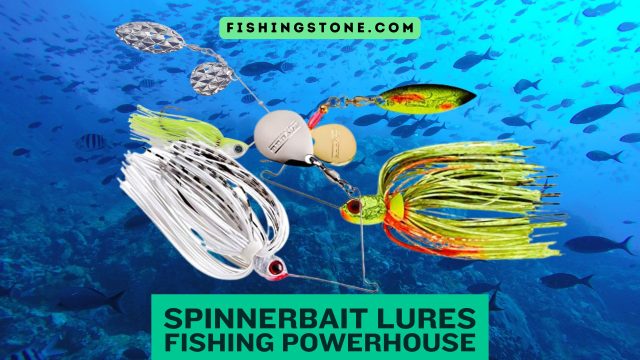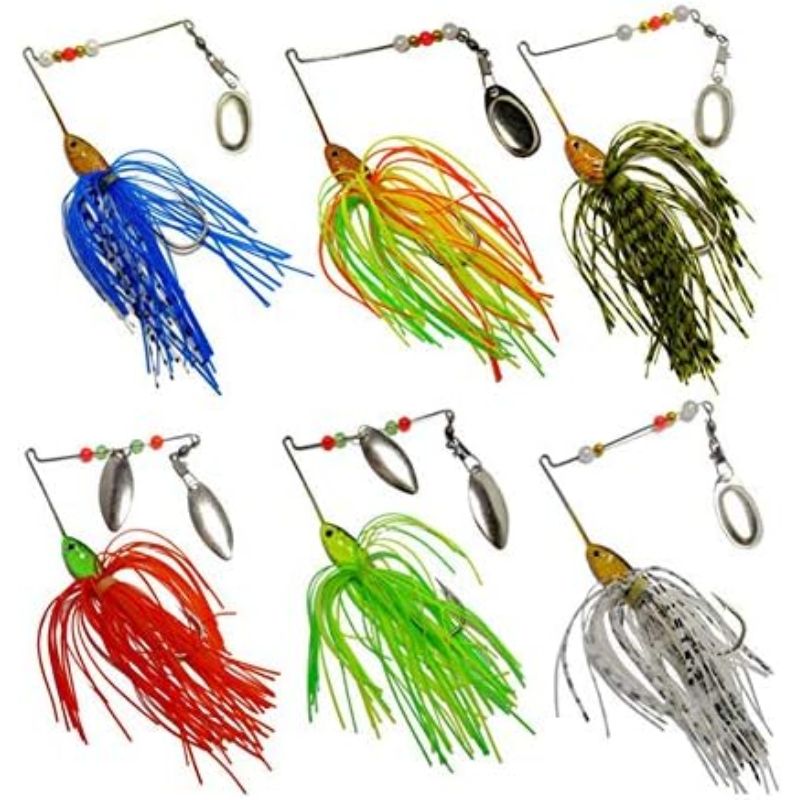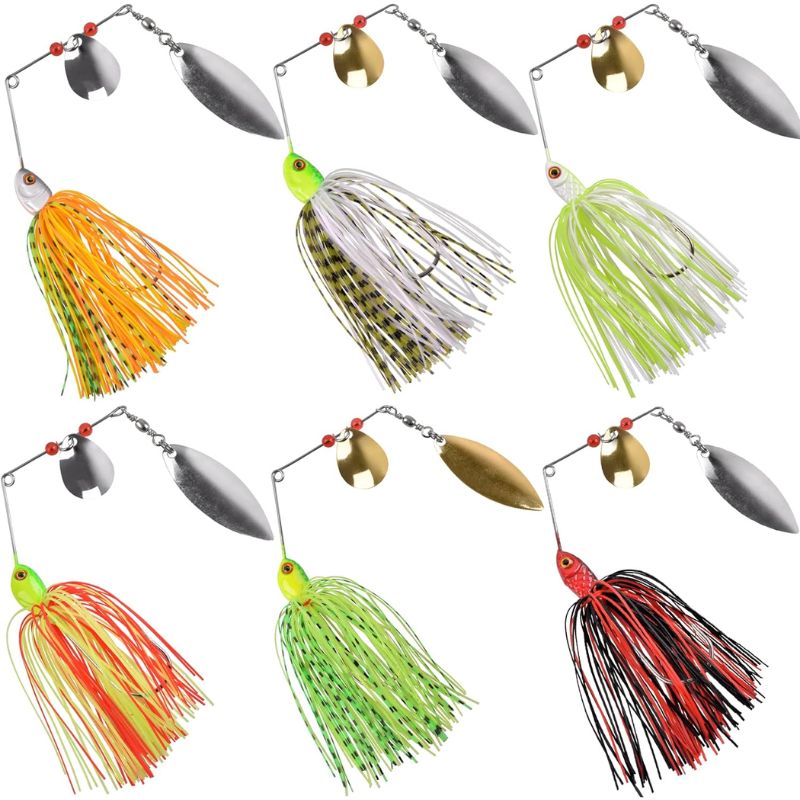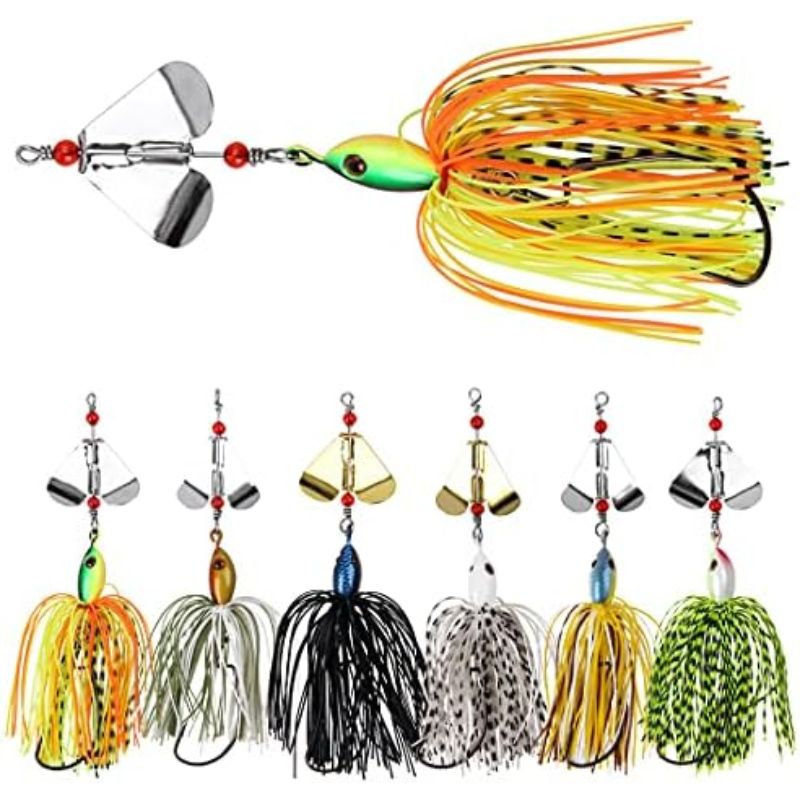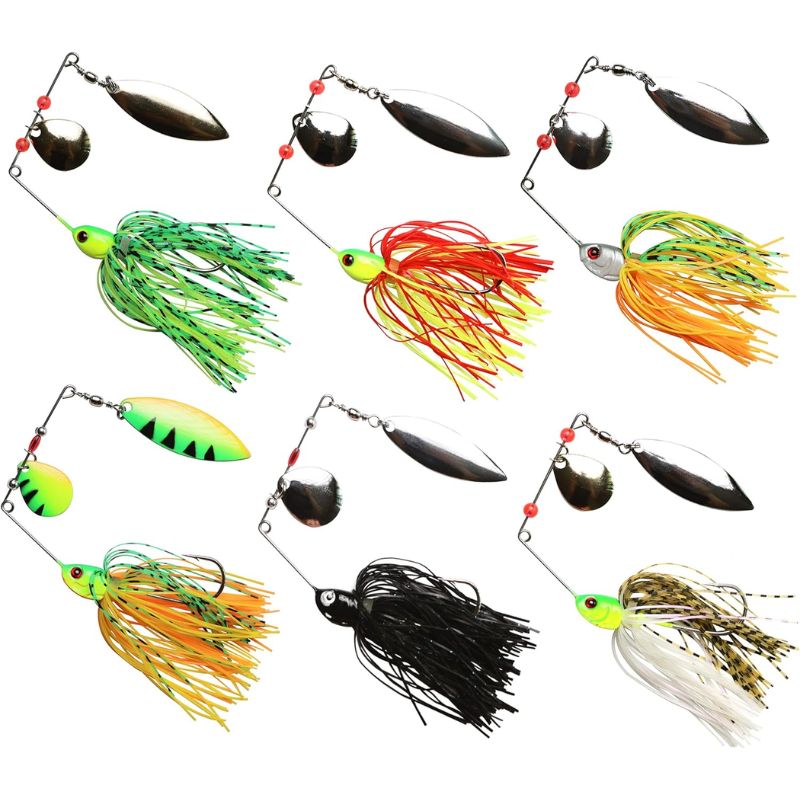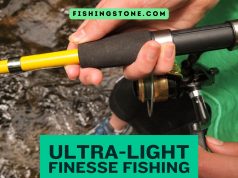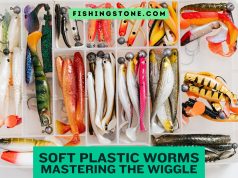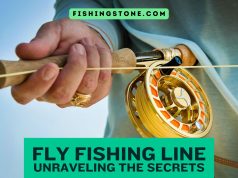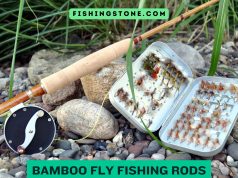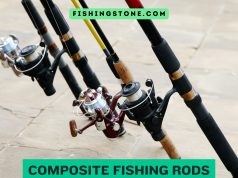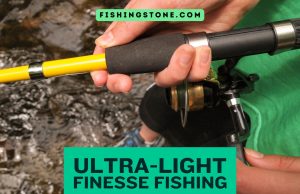Spinnerbait Lure Remains The Fishing Powerhouse has earned its legendary status for good reason. It’s not just a lure; it’s a statement.
Flash, Thump, and Fury: Why the Humble Spinnerbait Lure Remains The Fishing Powerhouse
When you sift through the tackle boxes of seasoned anglers, from the weekend warrior to the professional tournament champion, one lure almost universally holds a cherished spot: the spinnerbait lure. It’s a classic, an old faithful, and for good reason.
More than just a collection of wire, lead, and silicone, the spinnerbait is a master of illusion, a beacon of predatory prowess, and arguably one of the most versatile tools in a freshwater angler’s arsenal.
But what makes this seemingly simple lure so incredibly effective, and how can you harness its full potential?
Dive in with us as we unravel the mystique of the spinnerbait, exploring its anatomy, its irresistible appeal, and the techniques that will have you reeling in more fish.
DISCLOSURE: Some of the links on this page are affiliate links, meaning, that at no additional cost to you, I may earn a commission if you click through and make a purchase. Affiliate commissions help fund this website, our rare fishing trips and my extreme coffee addiction.
The Anatomy of an Angling Icon: Deconstructing the Spinnerbait Lure
Deconstructing Spinnerbaits Components Critical To their Success Video.Before we can truly appreciate the spinnerbait’s effectiveness, let’s break down its key components. Each part plays a crucial role in creating the irresistible flash and vibration that drives fish wild.
The Head
Typically made of lead, the head provides weight for casting and dictates the lure’s depth and action. Its shape varies, from bullet-like for quick descent to more intricate designs that might incorporate fins or realistic eyes for added appeal. The weight (¼ oz to 1 oz+) also influences how fast you can retrieve it.
The Wire Frame
This is the skeletal backbone of the spinnerbait, usually a thin, resilient stainless steel wire bent into an R-bend or V-bend shape.
- The “arm” extending upwards holds the blades.
- The “hook arm” extends downwards, securing the hook and skirt.
- The wire’s gauge (thickness) affects its durability and vibration transfer. A lighter wire offers more vibration but less strength; a heavier wire is tougher but can dampen the action.
The Skirt
This vibrant, pulsating heart of the lure usually consists of silicone or natural hairs, tied or banded to the head. The skirt provides bulk, creates a lifelike profile, and “breathes” in the water, mimicking the natural movement of a baitfish or crawfish. Colors range from subtle naturals to loud fluorescents, chosen to match local forage or stand out in murky conditions.
The Blades
These are the spinnerbait’s primary attraction, responsible for the mesmerizing flash and thumping vibration. They come in various shapes, sizes, and finishes:
Colorado Blades: Round, cupped blades that create maximum thump and lift. Ideal for slow retrieves, deep water, or stained/muddy conditions where vibration is key.
Willowleaf Blades: Long, slender, and pointed, offering less vibration but maximum flash and a more subtle action. Perfect for clear water, faster retrieves, and when fish are visually oriented.
Indiana Blades: A hybrid between Colorado and Willowleaf, providing a balance of flash and thump. A versatile choice for many conditions.
Tandem Combinations: Many spinnerbaits feature multiple blades, often a smaller Colorado followed by a larger Willowleaf (or vice-versa), to combine the benefits of both.
Finishes: Polished silver or gold for bright light, painted (white, chartreuse, black) for low light or matching baitfish, and hammered finishes for a more scattered light reflection.
The Hook
Most spinnerbaits lures feature a single, stout hook designed to be weedless when retrieved through cover. Many anglers add a trailer hook – a small, free-swinging hook attached to the main hook – to catch short-striking fish.
Why Do Fish Go Crazy for a Spinnerbait Lure? The Irresistible Appeal
Spinnerbait Fishing Lure Tips and How They Work Video.The spinnerbait’s magic lies in its ability to mimic several key prey characteristics simultaneously, triggering predatory instincts in most freshwater gamefish.
Flash: The rotating blades catch and reflect light, simulating the shimmering scales of a fleeing baitfish. This visual cue is a powerful attractant, especially in clear water or bright conditions.
Vibration (Thump): The cupped blades create an intense vibration in the water, which fish detect with their lateral line system. This “thump” mimics the distressed struggles of a wounded baitfish or the frantic movements of a crawfish, signaling an easy meal. It’s particularly effective in murky water where visibility is low.
Profile & Movement: The pulsating skirt and overall shape of the spinnerbait can imitate a variety of forage – from a school of minnows to a single, fleeing shad or even a defensive crawfish. The erratic “swimming” action as it moves through the water completes the illusion.
Versatility: Its weedless design allows it to be fished effectively through heavy cover – submerged grass, brush piles, rock gardens – where other lures would snag. This accessibility to prime fish-holding areas is a huge advantage.
Choosing Your Weapon: Matching the Spinnerbait Lure to the Conditions
How To Fish A Spinnerbait Fishing Lure Video.Selecting the right spinnerbait lure isn’t just about grabbing the prettiest one. It’s about understanding the specific conditions you’re fishing and tailoring your lure choice accordingly.
Water Clarity:
- Clear Water: Opt for natural skirt colors (whites, grays, greens, shad patterns) and high-flash blades (silver, gold, polished). Double willowleaf blades are often preferred for their subtle flash and less aggressive vibration.
- Stained/Murky Water: Go for brighter, more contrasting skirt colors (chartreuse, white, firetiger, black/blue) and larger, rounder blades (Colorado) that generate maximum thump. Painted blades (white, chartreuse) can also stand out better.
Forage Base:
“Match the hatch” whenever possible. If fish are feeding on shad, use white/silver skirts with silver blades. If they’re targeting bluegill, greens, browns, and oranges are good choices. For crawfish, opt for brown, orange, and black combinations.
Light Conditions:
- Bright Sun: Silver, gold, or polished blades maximize light reflection.
- Overcast/Low Light/Dawn/Dusk: Matte finish blades, painted blades (white, chartreuse), or darker blade colors can be more effective.
- Night Fishing: Black or dark blue skirts with a large Colorado blade for maximum vibration, often with a subtle glow or UV finish.
Cover & Depth:
- Heavy Cover (Deep Grass, Wood): Heavier spinnerbaits (3/8 oz to 1 oz+) with stout wire frames can punch through and stay down.
- Open Water/Shallow: Lighter spinnerbaits (¼ oz to 3/8 oz) are more manageable.
- Running Over Submerged Weeds: A single large Colorado blade can help keep the lure higher in the water column and prevent snagging.
Target Species:
While primarily known for bass, spinnerbaits are incredibly effective for pike, musky, walleye, and even crappie (with micro-spinnerbaits). Adjust lure size and strength accordingly.
Mastering the Retrieve: How to Fish a Spinnerbait Lure Effectively
The Ultimate spinnerbait lure guide and fishing tips Video.The spinnerbait’s effectiveness isn’t just in its design; it’s also in how you present it. Varying your retrieve is key to unlocking its full potential.
The Straight Retrieve (Basic Burn): Cast out and simply reel in at a consistent speed. This is a great starting point, but don’t be afraid to vary the speed. A “burning” retrieve (very fast) often triggers aggressive reaction strikes.
The Slow Roll: Ideal for deeper water, cold water, or when fish are lethargic and hugging the bottom or heavy cover. Let the spinnerbait sink, then retrieve just fast enough to keep the blades turning. The thumping vibration can entice even inactive fish.
The Stop-and-Go: Retrieve for a few turns, then pause, allowing the spinnerbait to fall or flutter. Resume the retrieve, then pause again. This erratic action mimics a wounded or disoriented baitfish, often triggering a strike on the fall or as it restarts.
The Yo-Yo Retrieve: A more aggressive version of the stop-and-go. Let the lure sink, then quickly lift your rod tip to pull it up, dropping it back down on a semi-slack line. This creates a highly erratic, darting action.
Waking: With a lighter spinnerbait, retrieve it just fast enough so the blades are breaking the surface, creating a small wake. This technique is deadly in low light or when fish are actively feeding on top.
Contact Fishing (Bumping & Deflecting): This is where spinnerbaits truly shine in cover. Cast past a stump, rock, or weed line, then retrieve so the lure “bumps” or “deflects” off the cover. This sudden change in direction often triggers an instantaneous strike from an ambush predator. Don’t be afraid to let it get hung up briefly – a slight twitch or pull can free it and often results in a bite.
Don’t Forget the Trailer Hook & Trailer:
- Trailer Hooks: Essential for short-striking fish that might nip at the skirt without engulfing the main hook.
- Plastic Trailers: Adding a soft plastic worm or grub, swimbait, or craw creature to the main hook can enhance the profile, add bulk, alter the action, or provide scent. Experiment with colors that complement or contrast the skirt.
Essential Gear for Spinnerbait Lures Success
Spinnerbait Setup Rod Reel Line Video.While you can technically throw a spinnerbait lure on almost any setup, optimizing your gear will greatly improve your experience and catch rate.
Rod: A 6’6″ to 7’6″ medium-heavy baitcasting rod with a fast action is ideal. This combination provides the power to cast heavier spinnerbaits, the backbone to drive hooks home, and the sensitivity to detect subtle bites. Composite Fishing Rods Comprehensive Guide.
Reel: A baitcasting reel with a gear ratio between 6.3:1 and 7.1:1 offers a good balance of retrieve speed for various techniques. How Much Line to Put on a Spinning Reel Guide.
Line: 15-20 lb fluorocarbon or monofilament is a solid choice. Fluorocarbon offers sensitivity and less stretch, while monofilament provides more stretch and buoyancy, which can be beneficial in certain situations, especially for slower retrieves or topwater presentations. Top Fishing Knot Tying Tools for a Successful Fishing Adventure.
Other Posts
- Essential Ice Fishing Lures for Any Catch
- Create Your Own Fly Fishing Lures
- DIY Fishing Lure Ideas for Home
- Spring Bass Lures for Great Catches
- Top Trout Lures for Every Season
- Discover Valuable Old Lures and Their Worth
We Hope You Like our Spinnerbait Lure Remains The Fishing Powerhouse Post
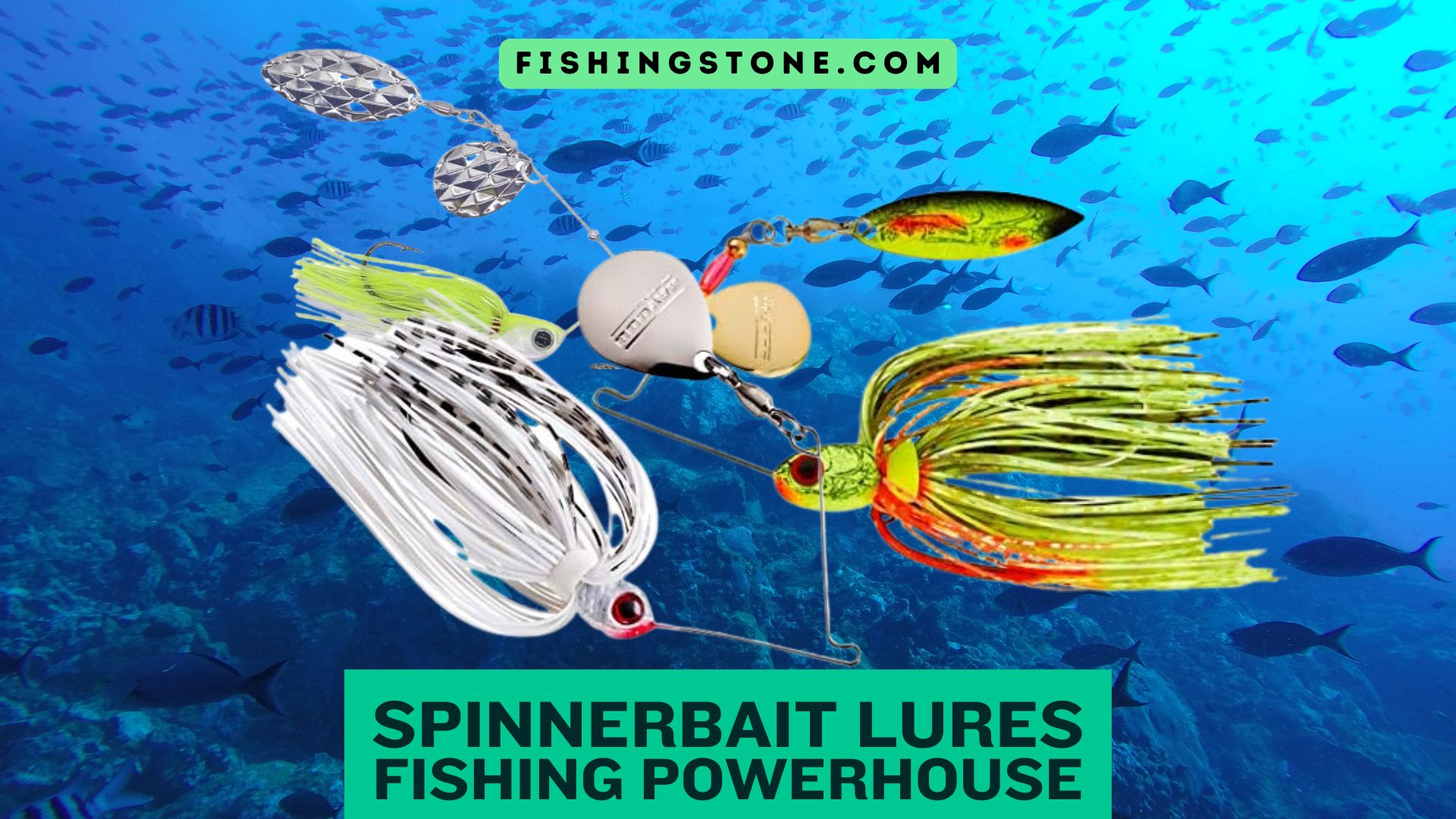
The spinnerbait has earned its legendary status for good reason. It’s not just a lure; it’s a statement. A declaration of versatility, resilience, and an unwavering ability to catch fish when other lures fall short. Its unique combination of flash, thump, and profile makes it an irresistible target for a wide array of freshwater predators.
So, whether you’re a seasoned angler looking to refine your approach or a newcomer eager to expand your tackle box, pick up a few different spinnerbaits, experiment with colors and blade combinations, and most importantly, get out on the water. Master the art of the retrieve, learn to “read” the conditions, and prepare to feel the exhilarating thump of a fish on the other end of your line. The humble spinnerbait is ready to prove why it’s a true freshwater powerhouse.
Happy fishing!
Fishing Stone post on several sites on Socia Media. By joining us on your favorite ones you can get updates on our latest Fishing Posts.
Find us on Facebook – Twitter – Pinterest – YouTube
Hope you have fun Fishing every day. Fish On!


